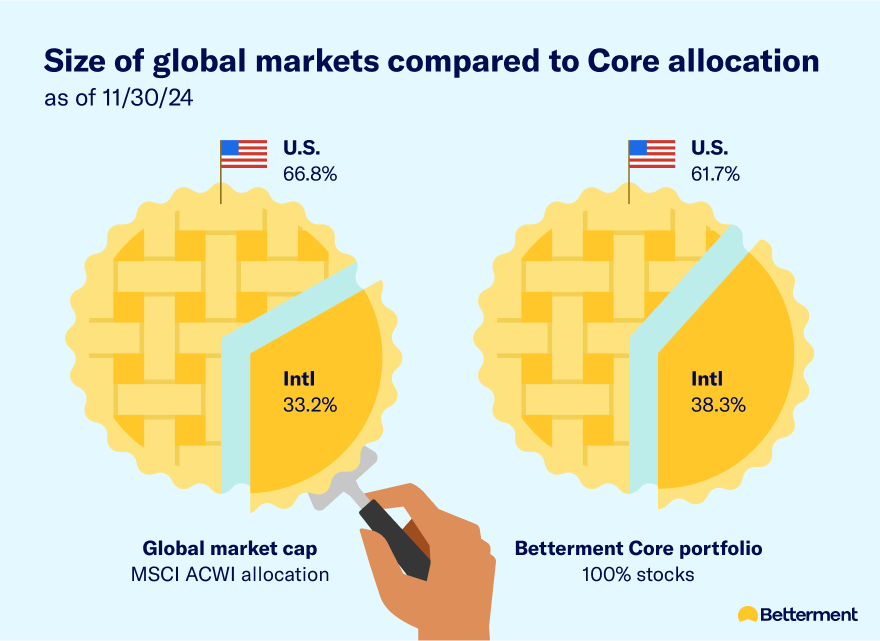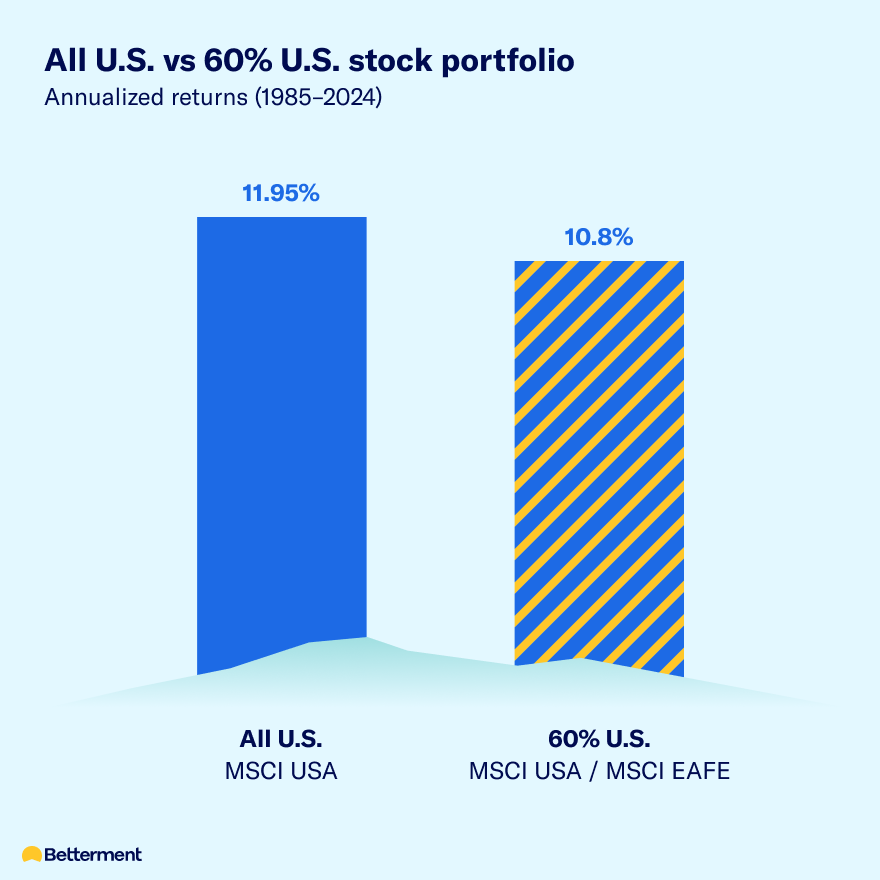
At some point in your investing journey, you may look at your returns and wonder if they could be better.
And if you’re a Betterment customer? Someone who’s been invested in one of our globally-diversified portfolios? Be prepared for one question in particular to creep into your mind:
“Wait, why isn’t my Core portfolio keeping up with the S&P 500?”
The question comes up from time to time — and the answer largely lies in a little thing called home bias. To better understand it, let’s first take a quick tour through the magical world of markets.
Hello, world. We’re here to invest.
We talk a lot about the “market” at Betterment, but in reality there is no one, single market. Instead, a bunch of interconnected markets are spread out across the world. And broadly speaking, from our perspective here in the States, you can place them into one of three buckets:
- The U.S. market
- International developed markets (Japan, much of Europe, etc.)
- International emerging markets (Brazil, India, etc.)
The U.S. market is big, but it’s far from being the only player in the game. There are still trillions of dollars of assets trading hands in international markets. It’s why our Core portfolio, built in part on the idea that more diversification equals less risk, roughly mirrors the relative weights of these players.

The U.S. market has been on a tear since 2010. But that’s not likely to last forever. So let’s switch gears to performance, and how to look at recent trends through a more historical lens.
Hello, home bias (“U-S-A! U-S-A!”)
American exceptionalism is in our blood; we can’t help it. It also shows up in our investing by way of home bias, or the tendency for American investors to favor American markets. And is it any surprise right now? The U.S. economy has recovered from the pandemic far faster, and to a much larger extent, than other countries.
The S&P 500, though it doesn’t represent the total U.S. stock market, is composed of the biggest American companies, name brands like Apple and Ford, so it’s become shorthand for investing’s Team America. And while it’s been surging this decade, international markets cleaned up in the 2000s. Historically-speaking, we take turns in the lead every 5 to 10 years.

So what’s an investor to do?
The cautionary tale of picking stocks applies here, because we don’t advise picking markets either. If you’re investing for the long term, the odds are good the U.S. market will hit a rough patch at some point. And in that scenario, a globally-hedged portfolio will very likely smooth out your returns from year to year, making your investing journey feel less like a hair-raising roller coaster.
That being said, diversification is a sliding scale. There is no pass/fail, no bad or good. And sometimes, good enough is good enough. Imagine you’ve been saving for retirement the last 40 years. The difference in annualized returns for an all-U.S. stock portfolio vs. a globally-diversified one (e.g. 60% U.S.) over that time span would have been (drumroll, please): 1.15%.

And while 1% makes a difference over time (it’s why we harp on taxes and fees so much), if you’ve been saving steadily over that time, you’re likely in good shape either way.
So here’s yet another chance to breathe easy. Both options—All-American and Mostly-American—have been reliable roads to long-term wealth in the past 40 years.
The numbers, while purely hypothetical and educational in nature, drive home that point. They don’t reflect the performance of Betterment customers, but rather two different ways of constructing a portfolio.
We offer several globally-diversified portfolios, each one made up mostly of U.S. equities, and two additional ways to keep your investing even closer to home:
- Invest in our Flexible Portfolio and reallocate your international exposure to U.S. asset classes.
- Sign up for Betterment Premium and get access to exclusive investing options like a U.S.-only portfolio.
Either way, it’ll be home sweet home (bias).







